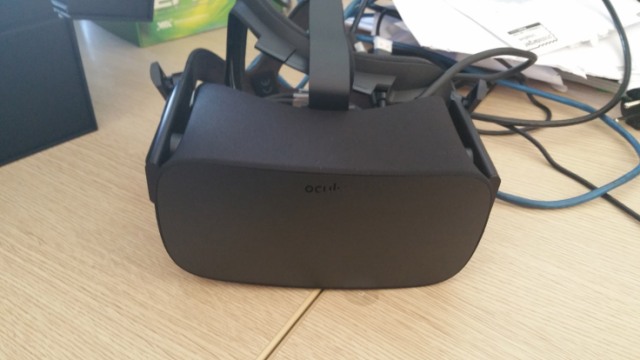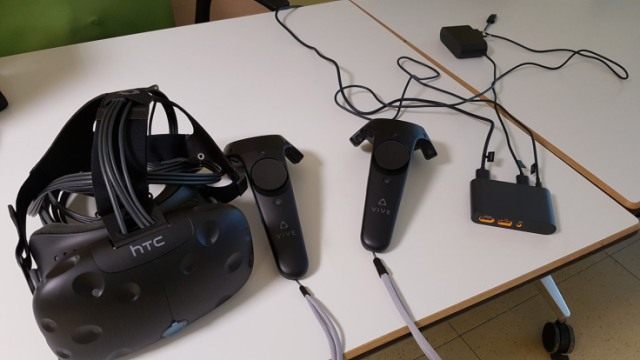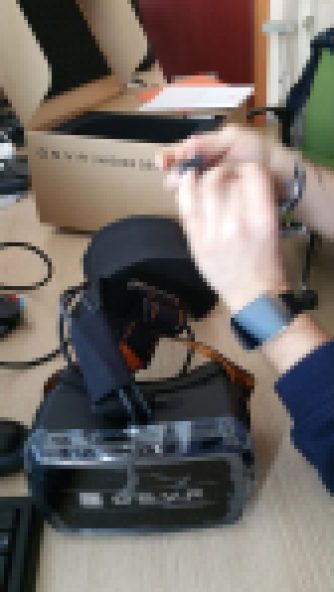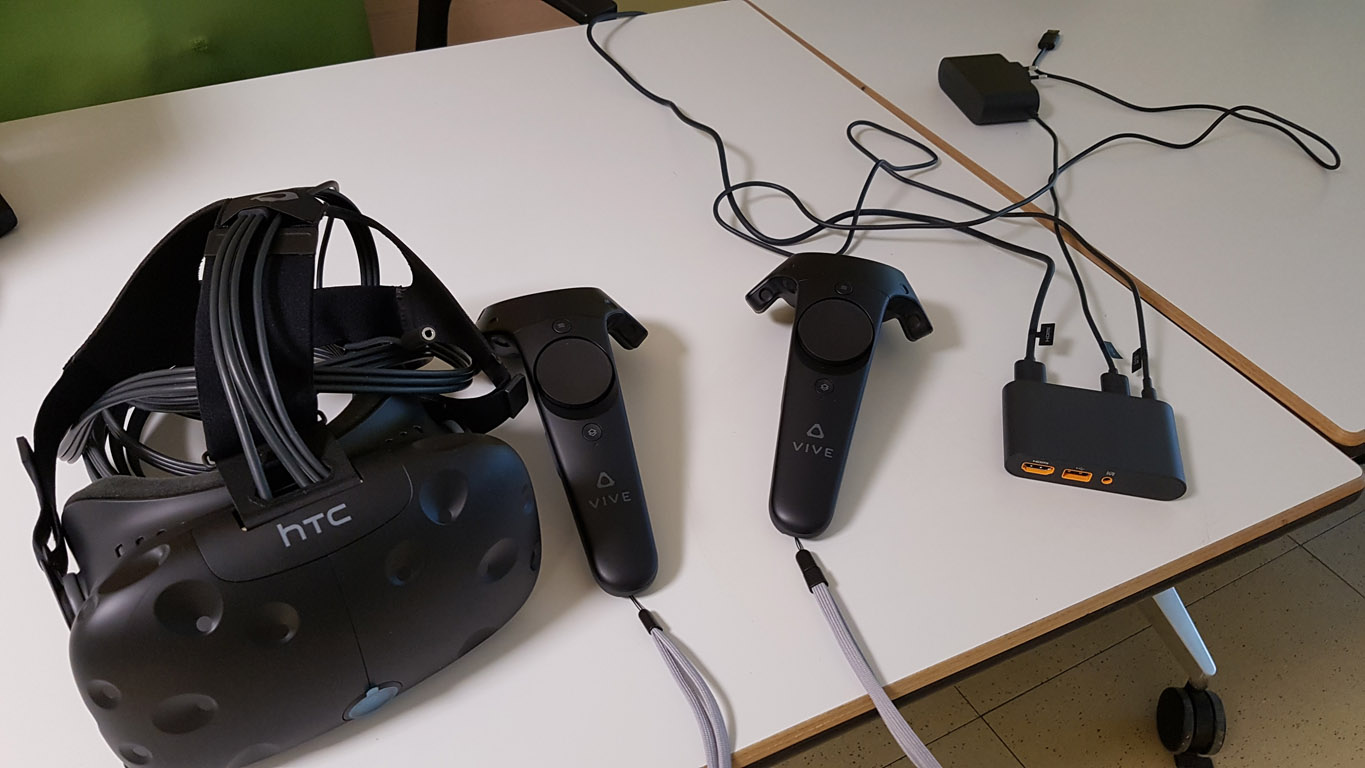What VR headset should you buy?
In my last article, I explained how to decide if you have to buy a virtual reality headset. In this new one, I’ll try to explain you which one you should buy, depending on what you want to do.
CAUTION: before reading this article, you must be aware that virtual reality is becoming full of fanboysm, so expressing the wrong opinion about a virtual reality headset to your friends (like saying “Oculus Rift is great” to a Vive owner) can make them kill you with a shotgun or, even worse, can be the beginning of WWIII. So, use the contents of this article at your own risk.
Every day, new VR headsets come to the light. In this article, I’ll just review the most known ones, i.e.: Oculus Rift, HTC Vive, PSVR, OSVR, Gear VR, Google Cardboard.
What VR headset should you buy? My advices are:
- Oculus Rift CV1. Great high-end headset, with cutting edge features. It also has integrated audio headphones, so it’s really all-in-one. I reviewed it some times ago and I think it’s a great product. Buy it if:
- You have the money for it (it’s quite expensive) and for a VR ready PC;
- You want cutting-edge virtual reality;
- You want elegance and design;
- You want a super-comfortable headset;
- You want something user-friendly;
- You don’t care about a closed ecosystem;
- You don’t care the lack of controllers (Oculus Touch will be out in some months);
- You don’t care giving money to Zuckerberg (a legend tells that if you wear Oculus for more than 1 hour a day, you’ll transform in a zombie facebook servant in few months).

Oculus Rift CV1
- HTC Vive: Another great high-end headset, with cutting edge features. It lacks the headphones of the Rift, but it offers true room-scale (the ability to move freely in a 4x4m space) out of the box. People kills each other to decide if it is better than Oculus or not, but it’s just a matter of religion (like Apple vs Android): I’ve tried this one, too and they’re both fantastic products. Buy it if:
- You have the money for it (it’s quite expensive) and for a VR ready PC;
- You want cutting-edge virtual reality;
- You want a system that pushes VR to its limits (Oculus is more oriented on design, Vive in introducing new features… it has created room-scale and has a frontal camera, that will be exploited for future uses, for example);
- You want room scale with two VR-fabulous controllers out of the box;
- You want an open ecosystem (lots of stuff in Vive are completely opensource);
- You don’t care about something still not super user-friendly (room scale has to be installed and configured) and comfortable (the cable is pretty heavy);
- You don’t care about interferences with Kinect v2;
- You use Steam and your secret love is Gabe Newell.

HTC Vive and its controllers
- PSVR: The headset for the Playstation 4. I’ve never tried it and will be out by the end of this year (2016), but from the reviews seems a headset more cheap but with lower quality of the two above competitors. Can’t say that much about it. Buy it if:
- You have a Playstation 4 and want to use it for VR
- OSVR: A completely virtual reality open-source project by Razer. (Disclaimer: ImmotionAR, my startup, is at the time of writing in OSVR partnership program, so my opinion can be biased and reading this article you may feel compelled to buy 3 OSVR headsets). I’ve tried and reviewed it and so I can say that it is an headset with lower quality than the above ones, but with a true open source heart, from hardware to software and a great philosophy. Buy it if:
- You have not the money to buy the above headsets (it costs half and doesn’t require the same powerful PC. My HDK1.3 works with my laptop, too);
- You are a true opensource fanboy (if your body fills of pustule if you only say the word “Microsoft”, this is the headset for you);
- You are a maker (HDK can be completely disassembled… and even its hardware is completely opensource);
- You want something that can be upgraded by yourself with “upgrade kits”;
- You are a developer that wants to learn VR and has few money;
- You want something completely open and so you can integrate it completely in some works of yours.
- You don’t care the lack of contents (games for OSVR are very very few);
- You don’t care the lack of quality (HDK is inferior to Oculus and Vive);
- You don’t care about comfort (my HDK1.3, to fit in my face, would require me to cut my nose);
- You don’t care about user-friendliness (good luck in configuring it).

Razer OSVR HDK1.3
- Gear VR: a high-end mobile headset, by Oculus and Samsung. You have to own a Samsung phone (from Note4 onwards) to try it, but it is surely the best among all mobile headsets. The great advantage is that you have no cable, so you can move freely in virtual reality with it and you can easily take it with you. Buy it if:
- You already own a Samsung high-end phone (come on, it’s only 99 bucks!);
- You can afford it (if you don’t have the phone, you’ll spend something like 600€ for the whole system… still below Oculus whole system price, anyway);
- You want something user-friendly that works out of the box;
- You want something comfortable;
- You want to give a try to VR, without much hassle;
- You want VR just to see some videos, try some demos (you’re not interested in super-duper-cool VR games that you want to play for hours);
- You want to easily showcase VR to friends or to your boss;
- You want to make some cool demos at exhibitions;
- You don’t care about the fact that after some times, it overheats and so you have to stop using it;
- You don’t care about the absence of features like positional tracking, room scale, appropriate controllers;
- You don’t care that much about developing (since pushing apps on android is quite slow, it is not the best device to dev on; you can give it a try, anyway);
- Google Cardboard: Cardboard is a Google project that started as a joke and ended up as a concrete project. It’s a super-cheap headset (it can costs even 2$ if you buy it from China) with super-cheap features. You just put your smartphone in it and voilà, you can try virtual reality! There exists lots of carboard-like headsets in the world with different quality and features (some are in plastic, some in cardboard; some have buttons, some others not, etc…), but their strength point is always the price tag. Google has recently announced a new project, called Daydream, for high-end mobile headsets. Buy it if:
- You are poor :);
- You have not a Samsung phone;
- You just want a quick glimpse to VR, just to see what is this technology all people is talking about (Cardboard is being crucial for VR, because it’s making virtual reality spread among most people possible);
- See some videos, try some demos;
- Make a marketing campaign: it is very common to produce lots of cardboards with your brand name on it and distribute them for free, with a companion app of your company that people can try;
- You don’t care about… almost everything, since this kind of headsets are very basic;
- You don’t care about differences with GearVR: GearVR has better visual quality, a phone that is fixed inside the headset, a touchpad and stabilized gyroscopes (this means that detected orientation is stable and doesn’t drift with time);
- You don’t care about your phone coming out of the cardboard and falling on the floor, destroying itself completely :).
And that’s it! Now, go outside your home and buy the headset of your dream! (But, before going there, just like and share this post, please!)
Disclaimer: this blog contains advertisement and affiliate links to sustain itself. If you click on an affiliate link, I'll be very happy because I'll earn a small commission on your purchase. You can find my boring full disclosure here.



